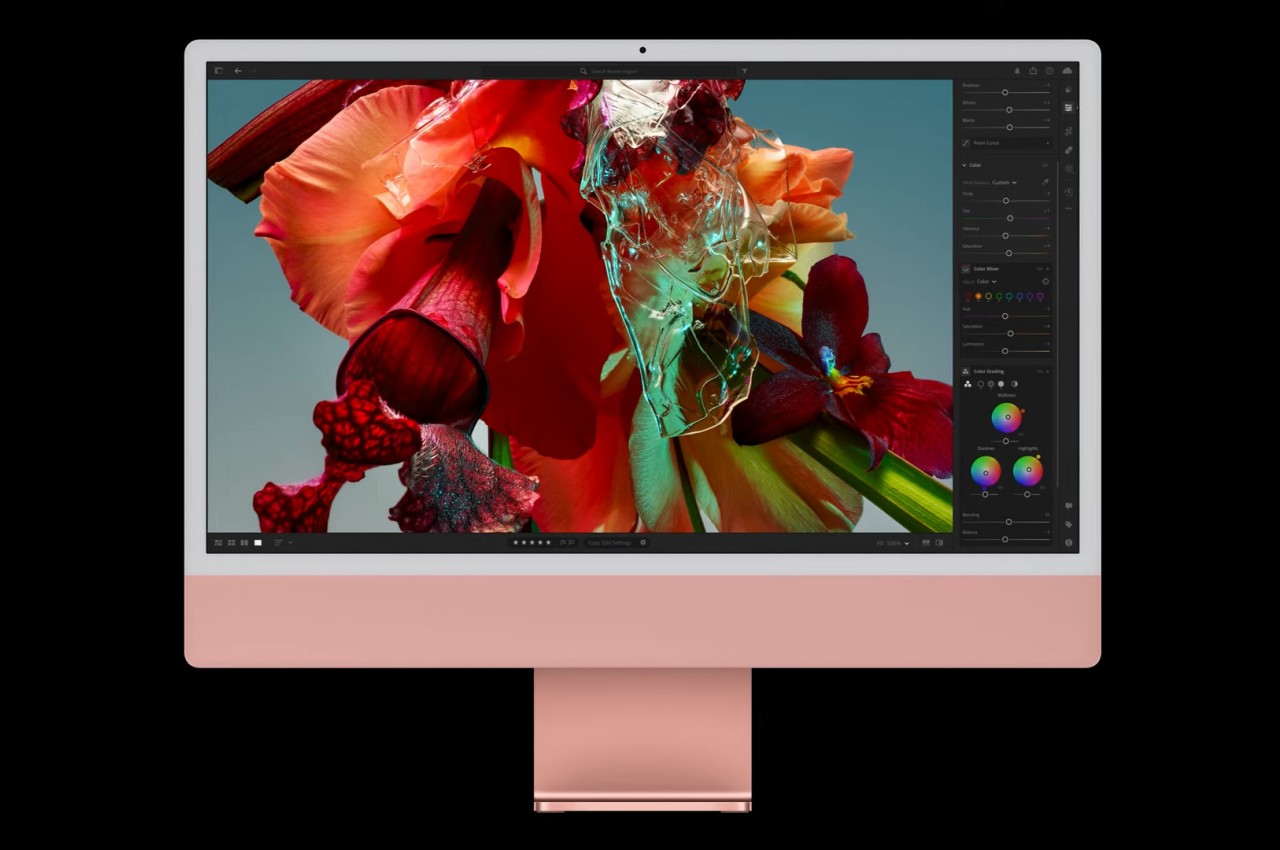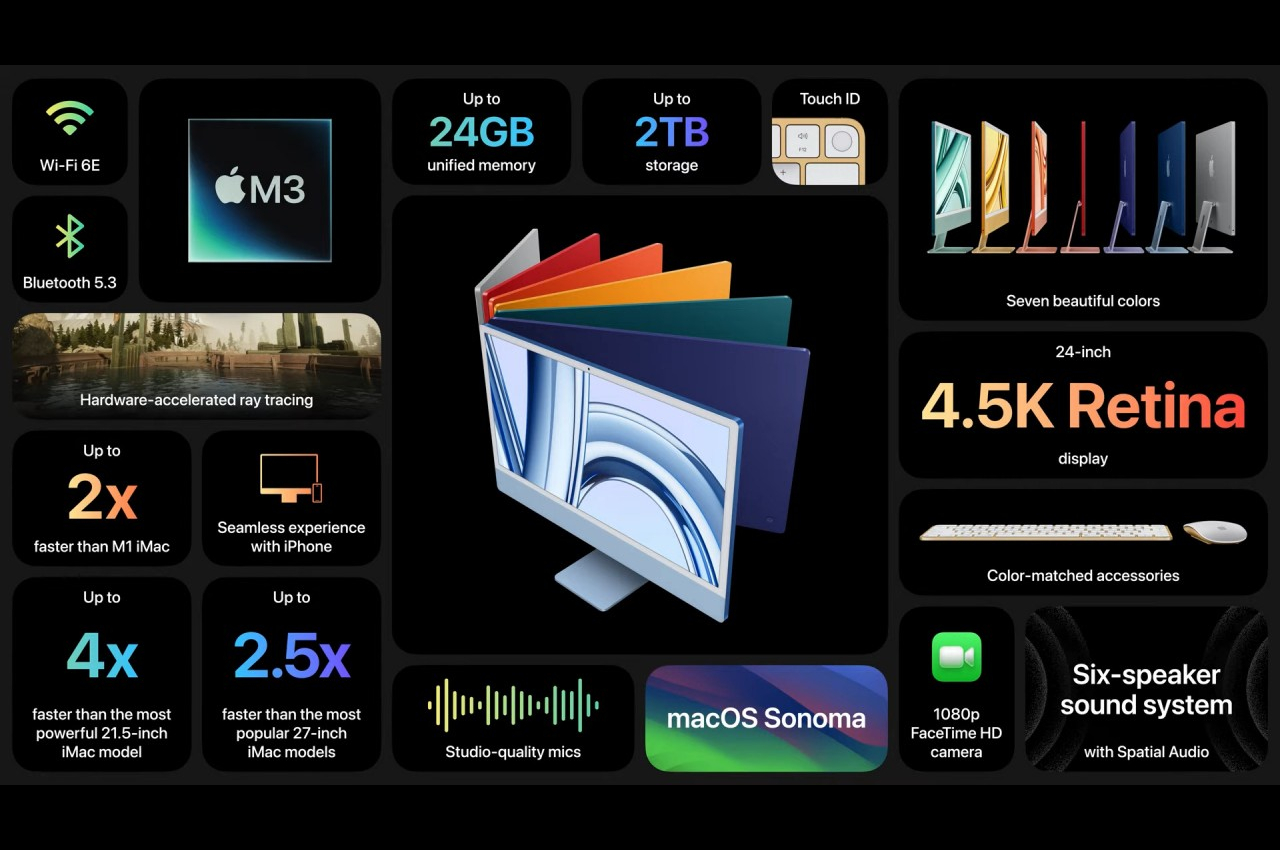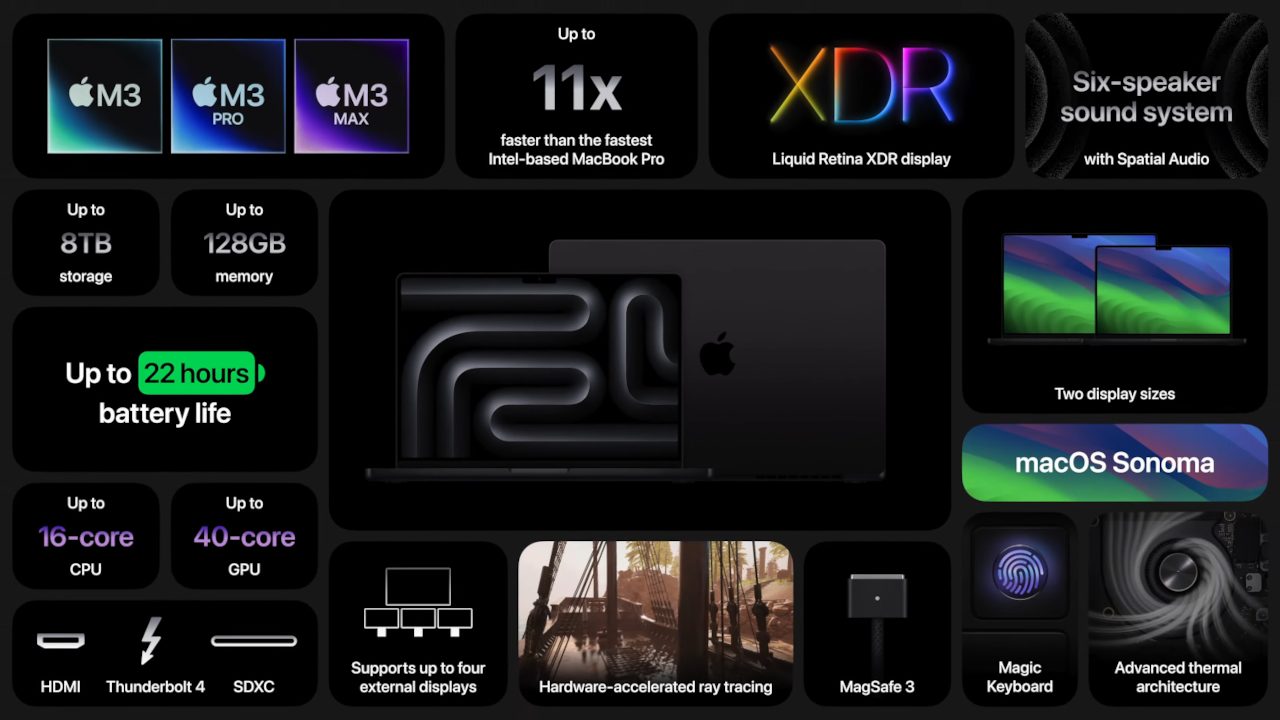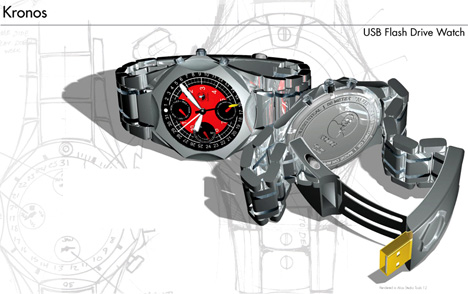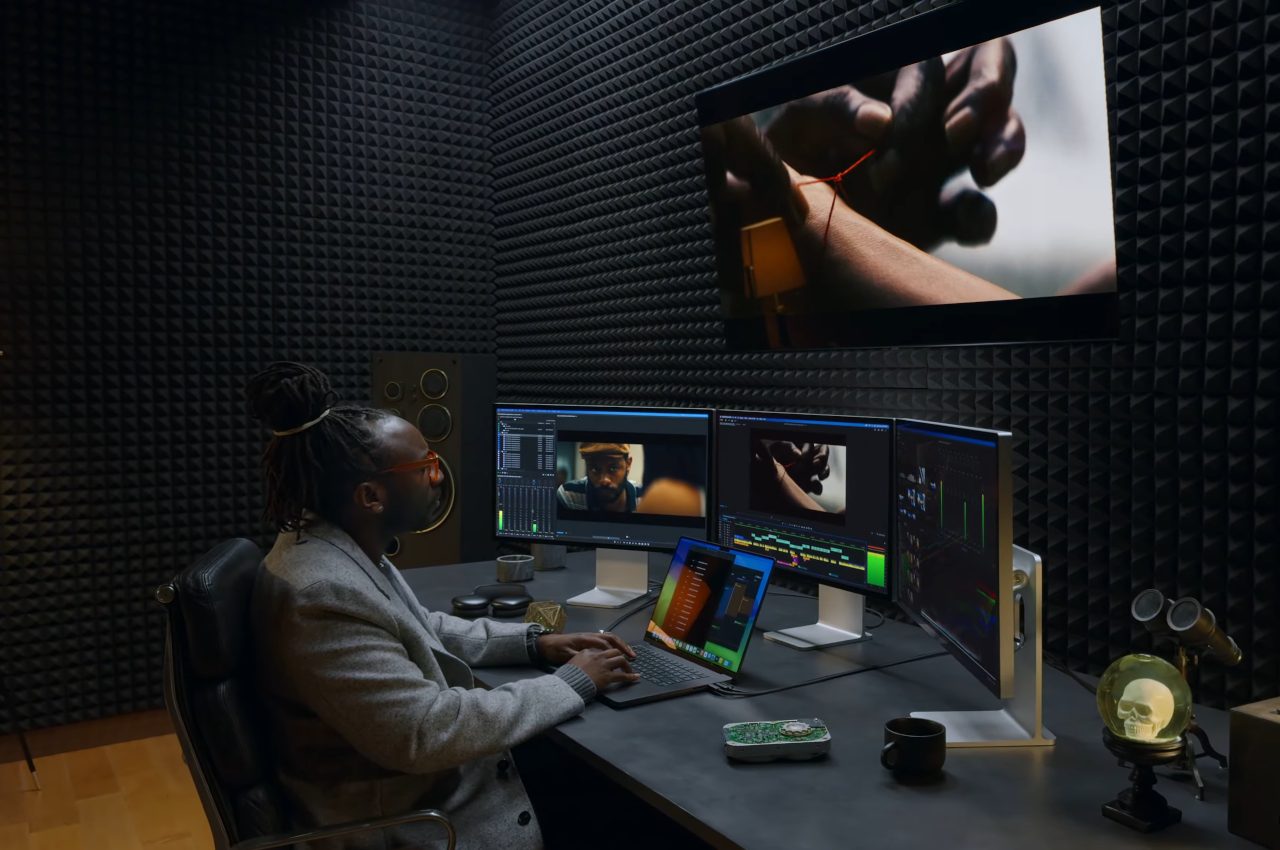
The next generation of silicon is coming to Apple computers. Announced in an uncharacteristically late-afternoon Apple Event on October 30, the three newest Apple chips (M3, M3 Pro, and M3 Max) are packed with the tiniest transistors Apple has ever stuck into its laptop and desktop computers. The newest chips, which use Apple’s groundbreaking 3nm process, are first launching with the new M3 iMac and M3 MacBook Pro, and, boy howdy, Apple is certainly giving other laptop manufacturers a run for their money in the final quarter of 2023.
Designer: Apple
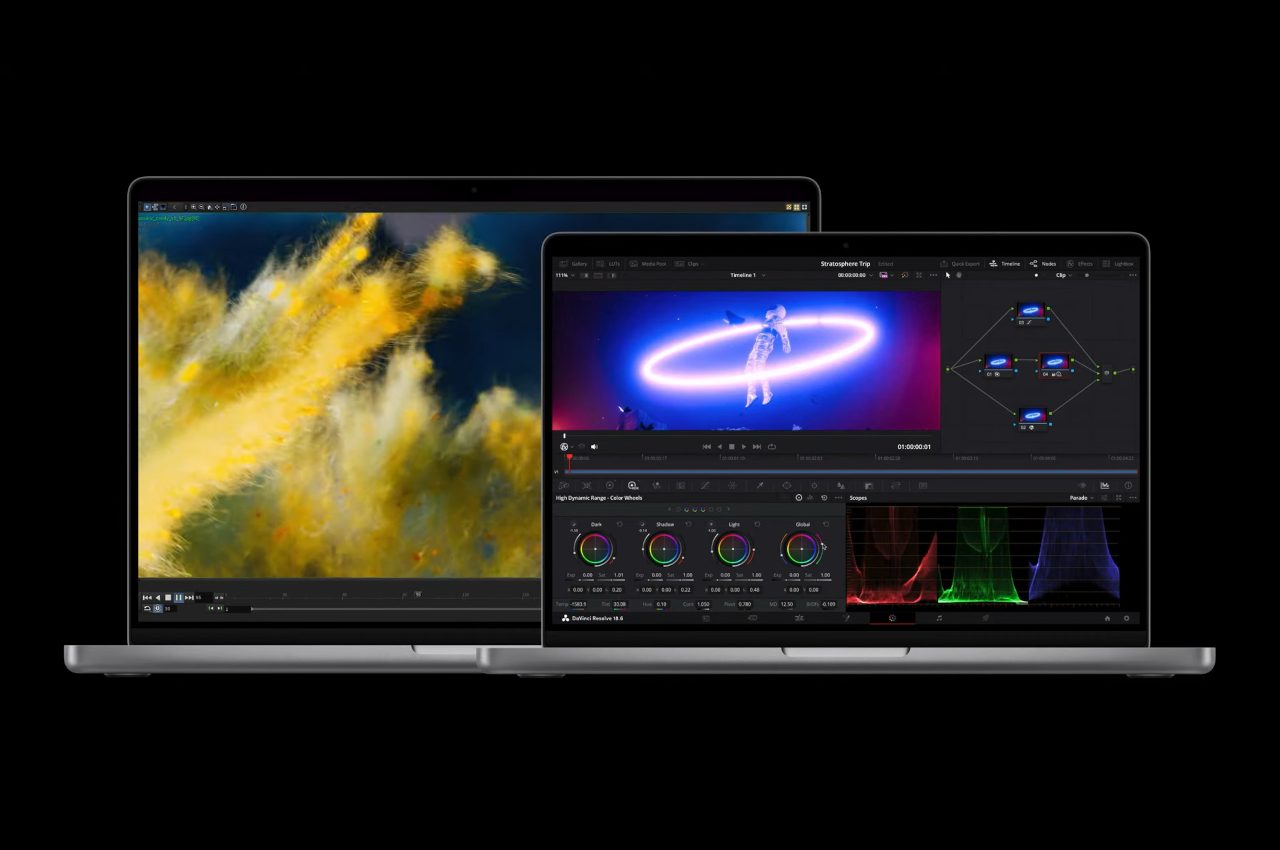
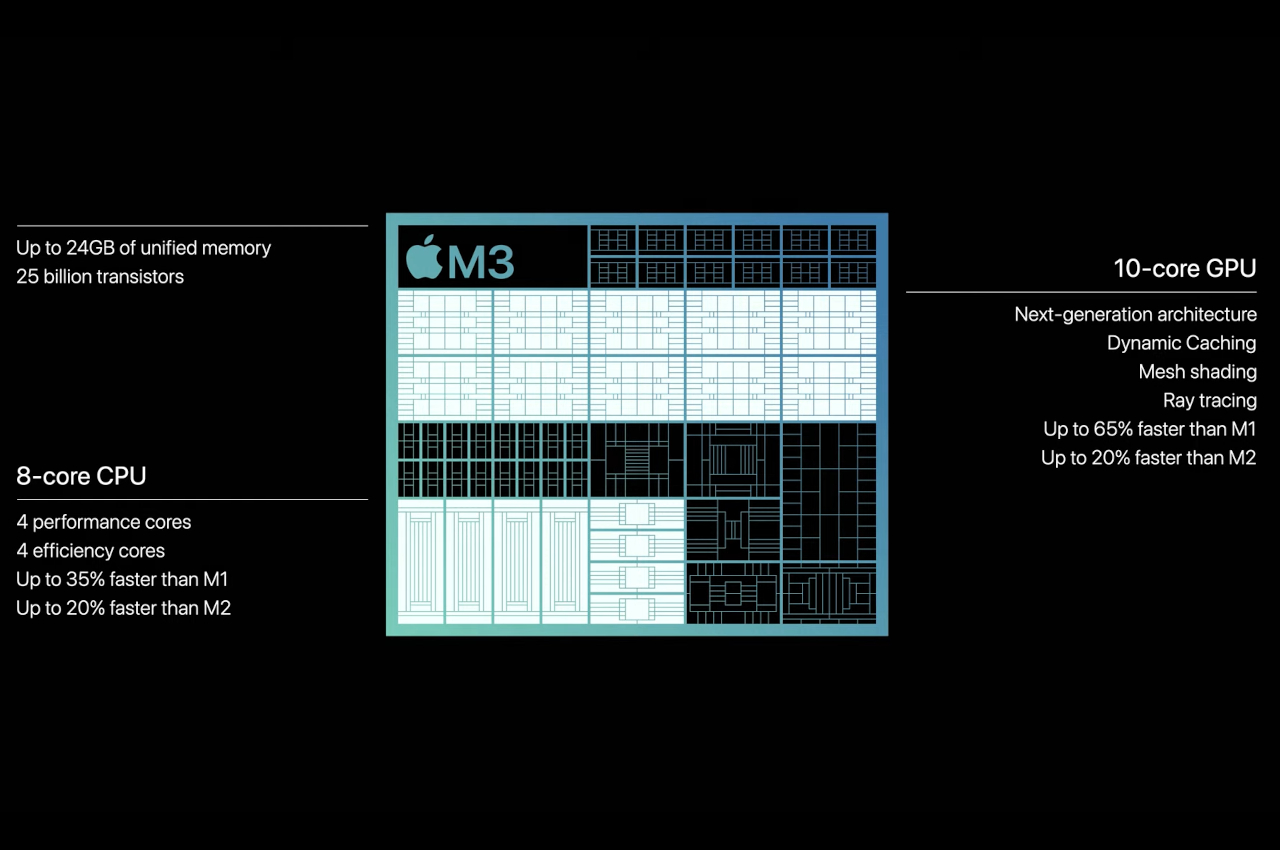
Apple makes a big deal over the fact its base 10-core M3 GPU can render graphics up to 2.5x faster than a comparable M1 GPU, while the base 8-core M3 CPU gets a 50% relative boost in performance to its M1 counterpart. In terms of raw performance alone, those two figures represent a massive upgrade over a chip that released alongside new Apple computers only three years ago. That’s just the tip of the iceberg; thanks to a bevy of new capabilities unlocked by M3’s ultra-compact transistor size, the upper performance limits of the M3 family are higher than ever — meaning, if you’re an AI developer, a game designer, or a visual designer of some sort, your next primary workstation may be a new Mac running on a hyper-powerful M3 Max, armed to the teeth with a 40-core GPU, 16-core CPU, 128 gigs of high-speed RAM, and a 8 TB SSD.
On a basic level, the standard 10-core M3 GPU is an impressive component, fitted with all-new features like hardware-accelerated ray-tracing, mesh shading, and Dynamic Caching to deliver, at a minimum, “65 percent more performance” over M1-based Macs when performing rendering-heavy tasks such as gaming and 3D imaging. It’s facilitated by the M3 chip’s new unified memory architecture (which is supposed to vastly speed up RAM while boosting power efficiency) and support for up to 24 gigs of RAM by default (or up to 36 gigs for the M3 Pro, or up to 128 for the M3 Max), which all make use of the aforementioned new unified architecture. Apple says this “unlocks workflows previously not possible on a laptop, such as AI developers working with even larger transformer models with billions of parameters.”
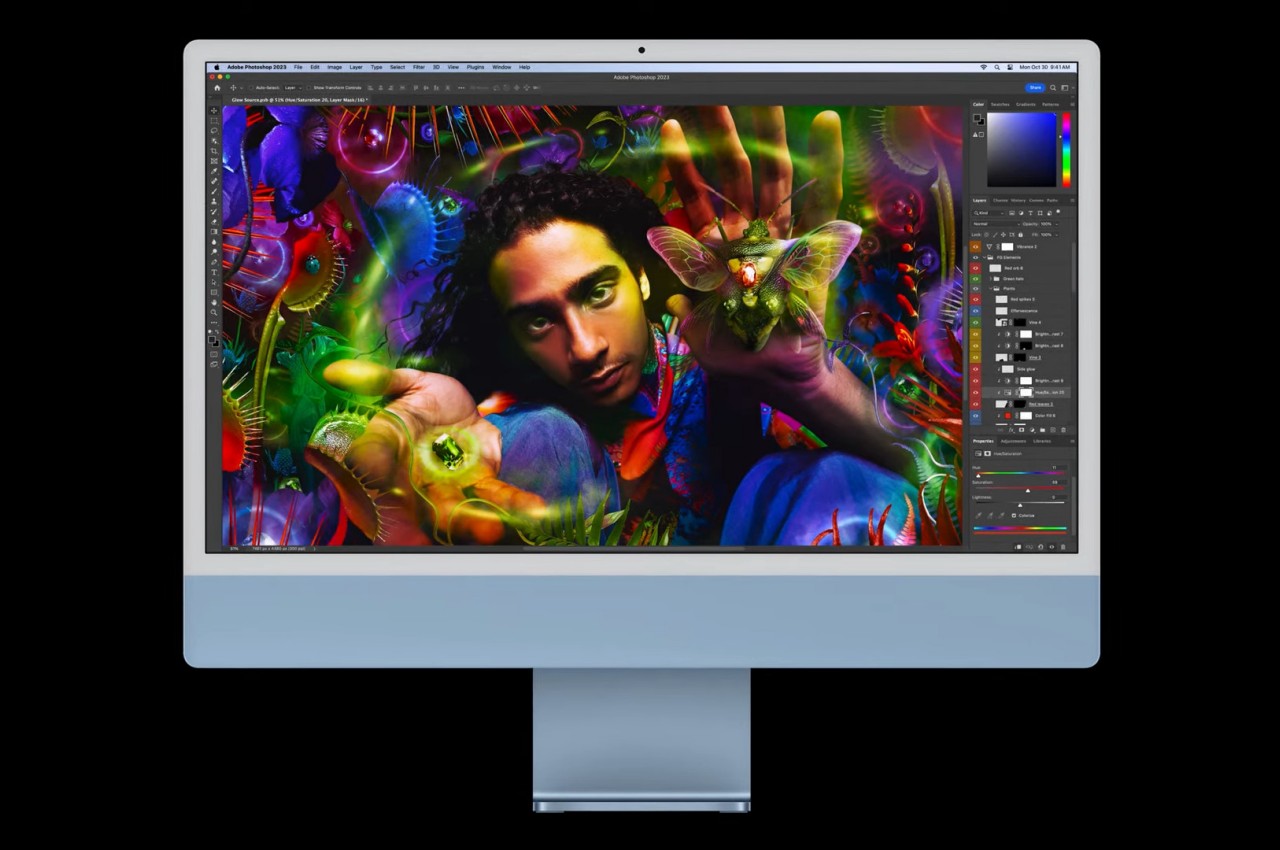
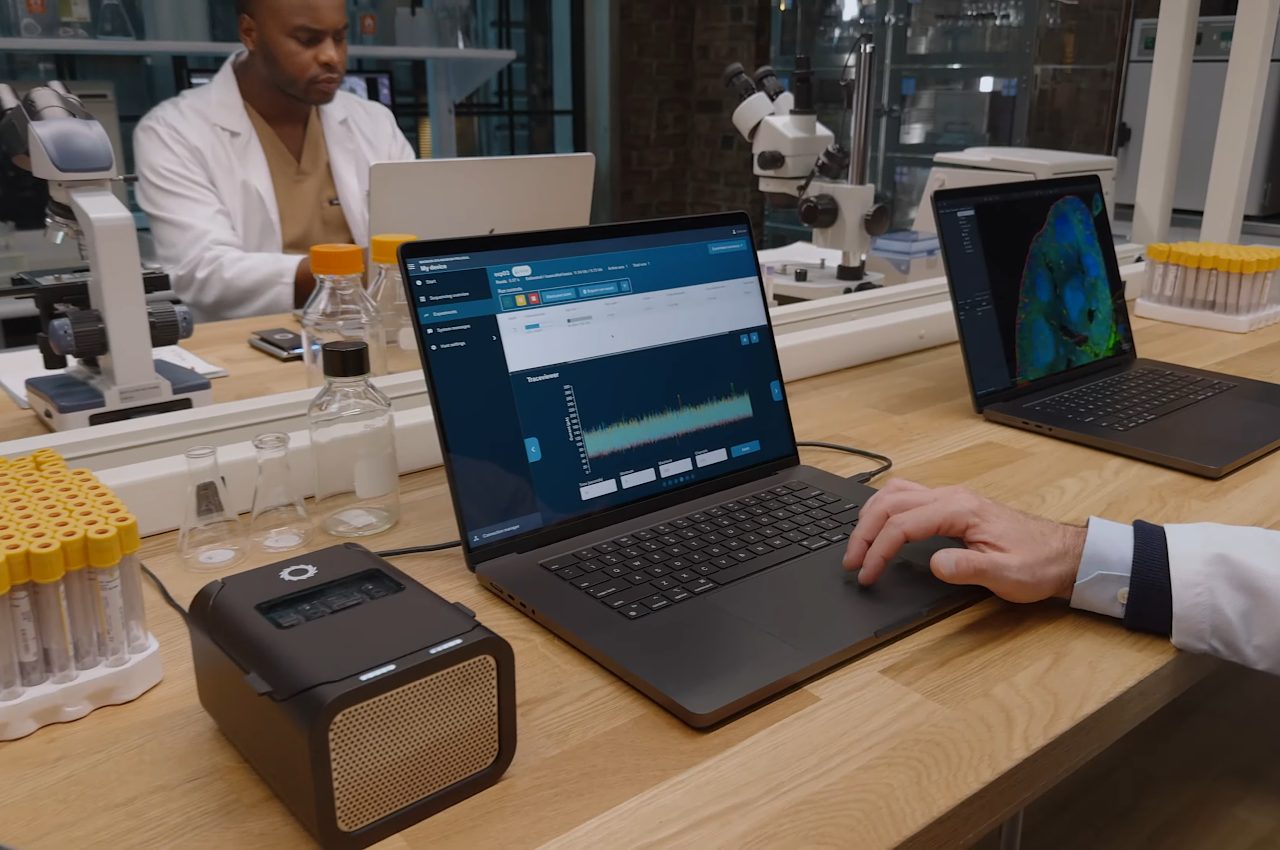

For the average user, that’s not a huge deal on its own. Sure, games are capable of running smoother and looking prettier as a result of the new hardware, and it sounds like macOS 14 is equipped to make use of the M3 chip design to enable things like Game Mode, which deprioritizes background tasks while a game window is active. But, another big draw of the new M3 architecture is the addition of integrated AV1 decoding. Built-in AV1 support means a new M3-powered iMac or MacBook Pro can smoothly stream 4k60 video from digital streaming services without a noticeable drop in quality if the connection starts to waver.
This also has work applications. For instance, two or more M3-powered Macs communicating with one another via Screen Share should have a buttery-smooth experience, even when both Macs are working on resource-heavy tasks.
